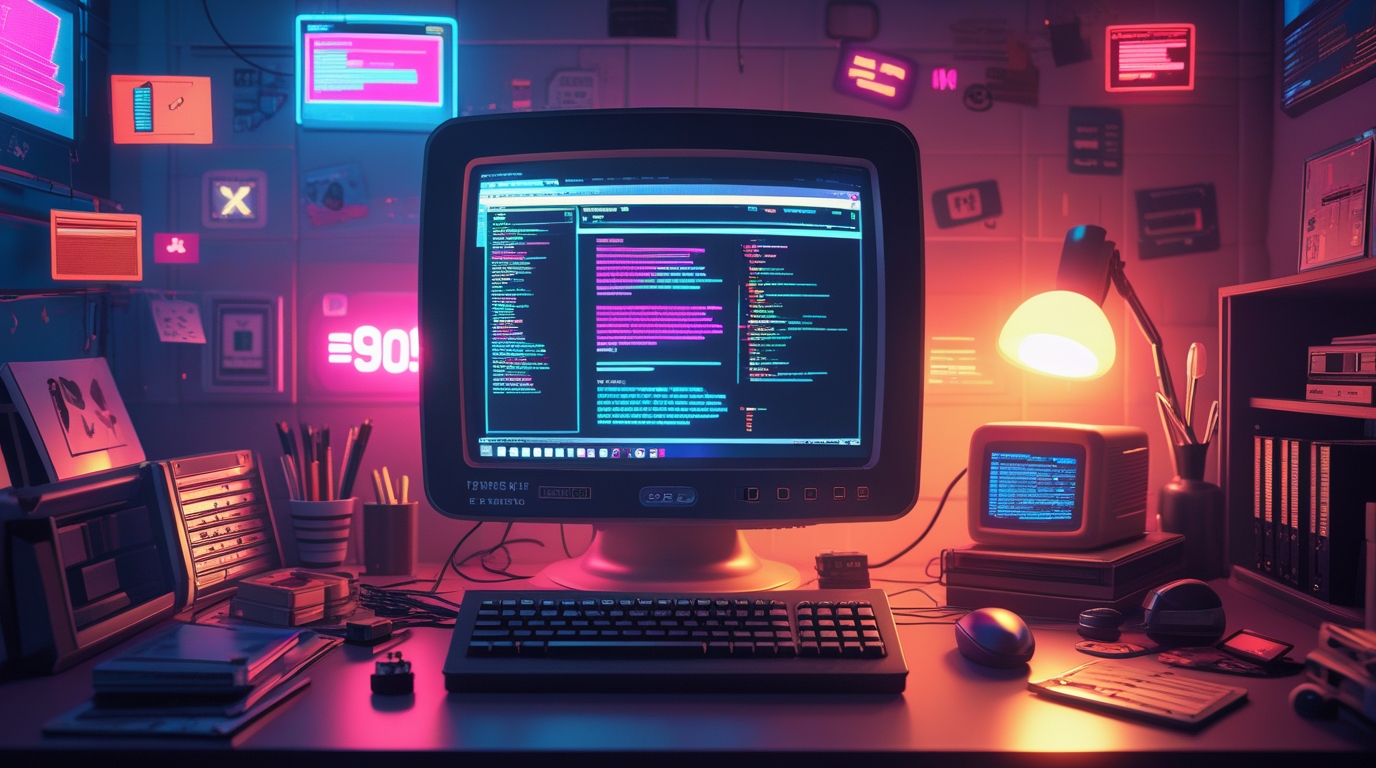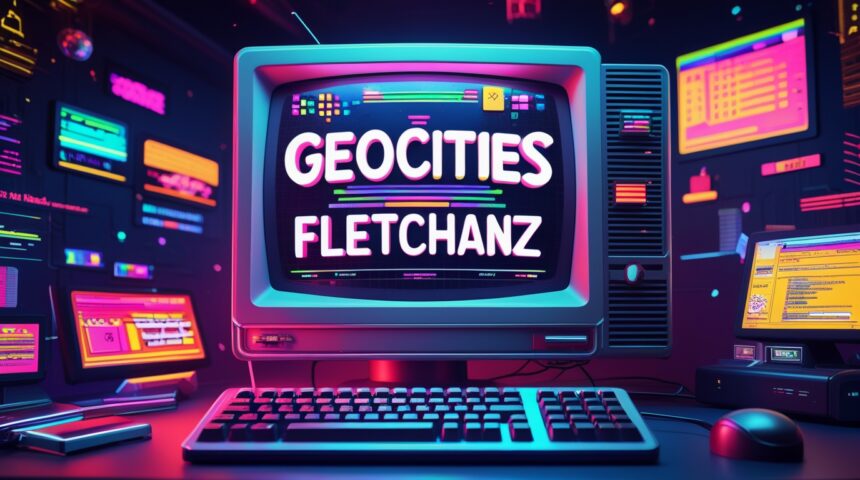Before social media giants like Facebook, MySpace, and Reddit transformed the internet into what we know today, there was a digital frontier built by everyday users with raw creativity and curiosity. Among the earliest and most influential spaces was Geocities, a web hosting service that gave individuals the power to create personal webpages. Within that sprawling online ecosystem, Geocities Fletchanz emerged as one of its vibrant neighborhoods—a hub that perfectly captured the experimental energy of early online life.
For many Americans growing up in the late 1990s and early 2000s, Geocities Fletchanz represented freedom, individuality, and digital discovery. It was more than a website—it was an online community that helped shape how people interacted, shared ideas, and expressed themselves in the pre-social-media era.
The Origins of Geocities and Its Neighborhood Concept
When Geocities launched in 1994, it revolutionized the internet by allowing anyone to build a webpage without needing to be a professional developer. The platform’s unique feature was its “neighborhoods”, where users could place their sites based on interests—like SiliconValley for tech, Hollywood for entertainment, and Fletchanz for creative expression.
Geocities Fletchanz became a digital neighborhood filled with personal blogs, fan pages, art galleries, and experimental designs. The concept was groundbreaking: it organized the chaotic early web into thematic communities, giving users a sense of belonging in a massive virtual city.
Geocities Fletchanz: A Home for Digital Pioneers

What made Fletchanz stand out from other Geocities neighborhoods was its spirit of creative independence. Its residents were not corporate designers or professional coders—they were ordinary users, teenagers, hobbyists, and aspiring webmasters teaching themselves HTML for the first time.
They created pages about their favorite TV shows, video games, or music artists. Others wrote online journals long before the term “blog” became popular. Fletchanz served as both a personal sandbox and a social hub where users shared tips, traded banner graphics, and linked to one another’s pages. In essence, it was a grassroots network built on passion and curiosity.
The Early Web Design Culture and DIY Creativity
One of the most charming aspects of Geocities Fletchanz was its distinct design culture. Webpages were built with blinking text, tiled backgrounds, animated GIFs, and custom cursor icons. While modern web designers might cringe at the aesthetic, these sites reflected true digital DIY culture.
For many users, Fletchanz was their first introduction to HTML, CSS, and web graphics. They learned by experimenting, copying snippets of code, and collaborating in guestbooks or forums. This hands-on creativity turned ordinary users into early digital creators, laying the groundwork for future generations of designers, bloggers, and developers.
Online Community Before Social Media
Long before “likes,” “follows,” and “feeds,” people on Geocities Fletchanz connected through guestbooks, link exchanges, and web rings. These were circular networks of related sites that encouraged mutual promotion and discovery. Users left friendly messages, offered constructive feedback, and built long-lasting online friendships.
This sense of community-driven networking mirrored what social platforms would later formalize—but it was more personal and organic. Every connection required intention. Sharing your link on someone’s page was a small act of trust, and each site felt like a handcrafted digital home rather than a feed filled with algorithmic content.
Fletchanz and the Spirit of Digital Freedom
The spirit of Geocities Fletchanz was rooted in the idea that the internet should be a place of freedom—where anyone could express their identity without judgment or commercial pressure. Users didn’t need to conform to a specific format or aesthetic. Every page was unique, often chaotic, but always authentic.
That diversity fostered true inclusivity, as Fletchanz welcomed creators from every background and interest. It represented the democratic promise of the web: that every voice, no matter how small, could find an audience.
Cultural Impact and Legacy in the 2000s
As the 2000s unfolded, Geocities Fletchanz became a time capsule of early internet culture. It captured the tone and personality of the web’s adolescence—a place where people were still figuring out how to be “online.”
Even after Geocities’ decline, the creative mindset it inspired continued to shape digital culture. Many early Fletchanz creators went on to work in tech, design, and digital marketing, carrying forward that experimental mindset into the new millennium. The neighborhood’s legacy is visible in modern blogging platforms, personal portfolio sites, and even in the nostalgic resurgence of retro web design.
The Fall of Geocities and the End of an Era
In 2009, Yahoo, which had acquired Geocities a decade earlier, announced it would shut down the service. For millions of users—including those in Fletchanz—it was the end of an era. Entire collections of personal pages, memories, and creative experiments vanished overnight.
This loss sparked a massive preservation effort. Groups like the Internet Archive and Archive Team raced to save as many pages as possible before the shutdown. Their work helped preserve not just data, but an important chapter in digital history that documented how ordinary people shaped the early internet.
Reviving the Spirit: Modern Parallels to Geocities Fletchanz
Today, the ethos of Geocities Fletchanz lives on through platforms like Neocities, a community-driven site dedicated to reviving the simplicity and creativity of early web design. Independent artists, coders, and nostalgic internet users continue to rebuild personal websites in the Fletchanz style—complete with pixel art, hand-coded layouts, and community links.
This revival shows a growing appreciation for digital authenticity in an age dominated by commercial platforms. It’s a reminder that the web doesn’t have to be sterile or corporate—it can still be personal, weird, and wonderfully human.
Why Geocities Fletchanz Still Matters Today
For historians, designers, and web enthusiasts, Geocities Fletchanz is more than just nostalgia—it’s a case study in how online culture evolves. It teaches us that community and creativity thrive best when users have ownership over their digital spaces.
Modern internet platforms could learn from that model. Giving users greater freedom to design, customize, and build their online identities fosters deeper engagement and emotional connection—something often missing from today’s algorithm-driven experiences.
Geocities Fletchanz and the Roots of Web Authenticity
As discussions about digital identity, online expression, and user control become more relevant than ever, Fletchanz’s legacy offers important lessons. The neighborhood embodied a type of web authenticity that’s hard to replicate in centralized platforms. Every page was a reflection of a real person—not a brand, not an influencer, but an individual experimenting with self-expression.
The unpolished charm of those pages symbolized a genuine connection between creator and viewer—a feeling that modern social media, with its filters and algorithms, often lacks.
Conclusion: The Timeless Legacy of Geocities Fletchanz
The story of Geocities Fletchanz is ultimately the story of how the internet found its soul. It represents a time when users didn’t just consume content—they created it. Every webpage was an act of passion, curiosity, and connection.
While the digital world has grown more sophisticated, the lessons of Fletchanz remain timeless: creativity thrives when people are free to experiment, and online communities are strongest when built on authenticity rather than metrics. As we look to the future of the web, revisiting the history of Geocities Fletchanz reminds us why the internet became such a powerful cultural force in the first place.
Frequently Asked Questions (FAQs)
1. What was Geocities Fletchanz?
Geocities Fletchanz was a digital neighborhood within Geocities where users created personal websites dedicated to creative expression, hobbies, and online community interaction. It became a symbol of early internet individuality.
2. Why was Geocities Fletchanz important in the 2000s?
It represented the growing culture of online communities before social media existed. Users built and shared content, forming tight-knit digital friendships that shaped the foundation of modern internet culture.
3. How did Geocities Fletchanz influence modern web design?
The DIY spirit of Fletchanz inspired the open-source, customizable nature of today’s blogging and portfolio platforms. Many design trends, such as minimalism and user-led creativity, trace their roots to that era.
4. Can you still visit Geocities Fletchanz pages today?
Although Geocities shut down in 2009, many Fletchanz pages were archived by organizations like the Internet Archive. Some enthusiasts have also recreated them on Neocities to preserve the nostalgic aesthetic.
5. What lessons does Geocities Fletchanz teach modern internet users?
It reminds us of the importance of personal creativity, community, and ownership online. Fletchanz showed that the internet could be a space for real human connection, not just commercial or algorithmic engagement.
FOR MORE : FLIPPAMAGAZINE












